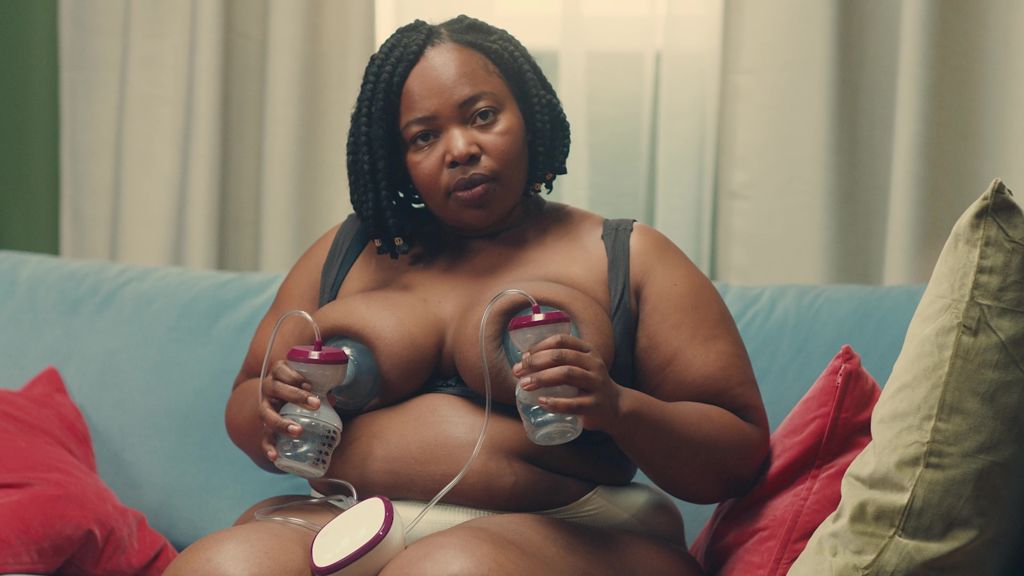Mother disruptor; why brands should pay attention to breastfeeding’s marketing moment
Nicola Kemp, Editorial Director at Creativebrief, celebrates the recent campaigns which honestly tackle the challenges faced by new mothers, but worries that the advertising industry is still invoking 'the motherhood penalty' on many women's careers.
A burst of creativity has shattered the silence that surrounds breastfeeding, highlighting the power of advertising's ability to smash stereotypes and make culture.
In amongst the realms of the invisible labour of motherhood there are few jobs as wordless, all-encompassing and under-appreciated as feeding a newborn baby. Yet a clutch of adverts are successfully smashing the stereotypes, silence, misplaced shame and the misunderstanding that surrounds breastfeeding, paving the way for a more progressive era of marketing to mothers.
The spots serve as a powerful reminder of the simple, yet radical strength in advertising just telling the truth about women’s lived experience.
The groundbreaking Spill the Milk campaign for Tommee Tippee, the feeding and accessories brand for babies and new parents, brings both joy and honesty to the unspoken. The ad, created by Manifest, features breastfeeding women, those who prefer to bottle-feed and a woman who, following a double mastectomy, formula feeds.
In a separate campaign, the beauty of the raw, unfiltered challenge and all-consuming journey of breastfeeding is brought to the screen with creative honesty by Frida Mom in its Streams of Lactation spot, created by Mekanism. The spots serve as a powerful reminder of the simple, yet radical strength in advertising just telling the truth about women’s lived experience.
Credits
powered by
- Agency Mekanism/New York
- Production Company Iconoclast
- Director Rachel Morrison | (Director/DP)
-
-
Unlock full credits and more with a Source + shots membership.
Credits
powered by
- Agency Mekanism/New York
- Production Company Iconoclast
- Director Rachel Morrison | (Director/DP)
- Associate Creative Director Katie Bourgeois
- Associate Creative Director Bryan Davis
- Creative Director Rachel Carlson
- Executive Creative Director Laura Wimer
- Senior Producer Zachary Fleming
- Colorist Matthew Greenberg
- Audio Post Sound Lounge
- Edit Company Forager Collective
- Editor Sophia Lou
- Line Producer Lisa Cowan
- HP Katie Haberstock

Credits
powered by
- Agency Mekanism/New York
- Production Company Iconoclast
- Director Rachel Morrison | (Director/DP)
- Associate Creative Director Katie Bourgeois
- Associate Creative Director Bryan Davis
- Creative Director Rachel Carlson
- Executive Creative Director Laura Wimer
- Senior Producer Zachary Fleming
- Colorist Matthew Greenberg
- Audio Post Sound Lounge
- Edit Company Forager Collective
- Editor Sophia Lou
- Line Producer Lisa Cowan
- HP Katie Haberstock
Above: Frida Mom's spot is one of two recent campaigns which tackle the real world challenges involved with breastfeeding.
The power of truth
In the spirit of that truth I should point out I have a stake in this conversation or, perhaps more accurately, it holds a slice of my soul. I’ve felt the intensity of the pressure that new mothers face at such a vulnerable, precious, yet intensely fragile time in their lives. I’ve experienced the intense judgement and sharp contradictions. I’ve been urged not to breastfeed for too long, or told that I’ve not done so for long enough, and even encouraged to do so where fewer people can see. I’ve felt the weight of those competing expectations identified by Tommee Tippee’s research, revealing that 74% of mothers say that they felt society overlooked the challenges of breastfeeding. This work means something to me.
I’ve felt the intensity of the pressure that new mothers face. I’ve experienced the intense judgement and sharp contradictions.
Truth be told, I wanted to write about the absolute invisibility of the experience of breastfeeding in marketing seven years ago. In fact, I remember clearly an intense desire to place some kind of logo on the features I wrote during that time (on a breastfeeding cushion with a sleeping baby, pictured below) to highlight the fact that they were written while also feeding a baby. I was probably too busy explaining why that year was the year of mobile, or of the rise of agile marketing, or predicting the death of TV (both maternity leaves, because the industry moves so quickly, you know) for the idea to make it to the page.

Above: Kemp continued to work while also breastfeeding her child.
Perhaps I was sleep-deprived, but that intense desire for those invisible experiences of motherhood to be both seen and valued remains. Yet, seven years later, the truth is that these groundbreaking adverts, which reflect the lived experience of motherhood, remain the exception. When you consider that glacial pace of change alongside the narrative of how fast-moving and dynamic the industry is, a toxic truth emerges. Because this narrative of a ‘fast-paced industry’ has been casually used to exclude mothers from the creative industries. Barely a feather was ruffled in 2015 when advertising legend Sir John Hegarty explained that the biggest problem for women advancing their careers is taking career breaks to have children, then struggling to rejoin an industry that has moved on.
This narrative of a ‘fast-paced industry’ has been casually used to exclude mothers from the creative industries.
When you consider this view through the lens of the ironed out, dead-eyed, straight-jacketed image of perfection which still pervades much marketing to mothers, we know the opposite to be true. It is, in fact, the industry that has catastrophically failed to move on. By failing mothers in the workplace, the creative industries risk failing to represent motherhood's complexities in its creative output. This work matters not just because it shows mothers as they are; but it reminds us all of just how far we still have to go as an industry.
Credits
powered by
- Agency Manifest/London
- Production Company The Gate Films
- Director Fiona Burgess
-
-
Unlock full credits and more with a Source + shots membership.
Credits
powered by
- Agency Manifest/London
- Production Company The Gate Films
- Director Fiona Burgess
- Colorist Black Kite Studios
- Online The Gate Films
- DP Olan Collardy
- Sound Rebecca Morgan
- Creative Director Chomoi Picho-Owiny
- Campaign Director Emma Corbett
- Producer Rhiannon Lewis
- Production Manager Lindsay Cowan
- Art Director Hannah Wilson

Credits
powered by
- Agency Manifest/London
- Production Company The Gate Films
- Director Fiona Burgess
- Colorist Black Kite Studios
- Online The Gate Films
- DP Olan Collardy
- Sound Rebecca Morgan
- Creative Director Chomoi Picho-Owiny
- Campaign Director Emma Corbett
- Producer Rhiannon Lewis
- Production Manager Lindsay Cowan
- Art Director Hannah Wilson
Above: Tommee Tippee's spot celebrates all forms of feeding.
The motherhood penalty
The uncomfortable truth is that women have been paying the motherhood penalty in the creative industries long prior to this pandemic. Yet, with a myriad of data points showing the ways in which women have been disproportionately impacted by the pandemic, the risk is that the next generation of creative talent will simply choose a more family-friendly and flexible path to success.
The urgent question is what message are we sending to the next generation of female creatives that this is an industry for them?
In the midst of the pandemic micro-aggressions abound; from the fishbowl post from a Creative Director discussing his ‘selfish’ co-worker who was attempting to work around her toddler, to working mothers pushed to absolute breaking point feeling they have no other option but to resign. The urgent question is what message are we sending to the next generation of female creatives that this is an industry for them?
We have a once-in-a-generation opportunity to reset the workplace for the better. But it demands that we do things differently and challenge the status quo. It is possible to remove the barriers, the bias and the flexism which still holds mothers back in the creative industries. We all have a responsibility to raise the bar.
We can’t commit to championing women in the workplace if we aren’t honest about tackling the challenges.
From WACL’s #FlexibleFirst campaign to Creative Equals trailblazing Creative Comeback scheme, the tools and pathways are there to support the industry to make meaningful change and produce the most impactful work. Because the truth is we can’t commit to championing women in the workplace if we aren’t honest about tackling the challenges and outdated attitudes still holding them back.
)













